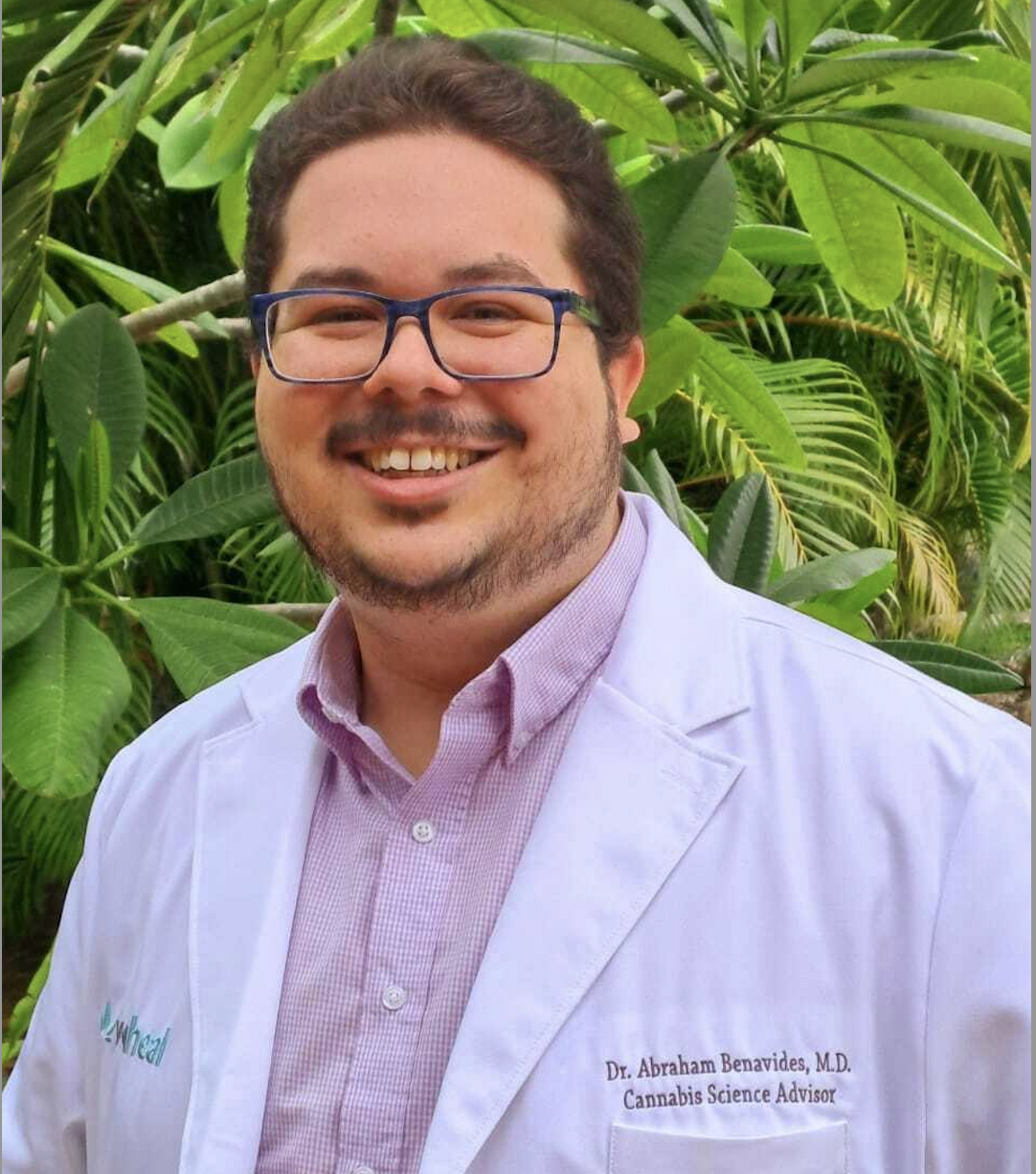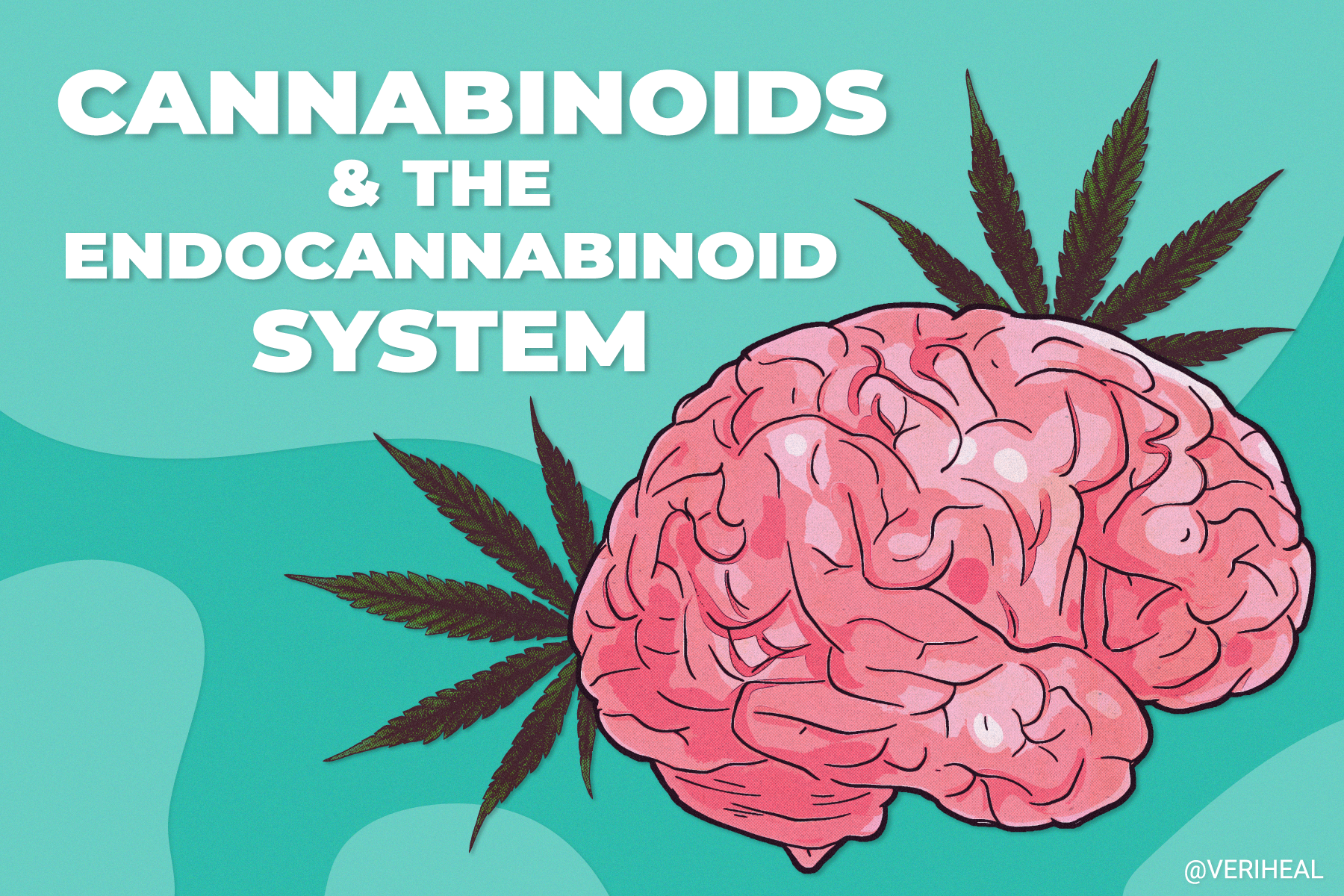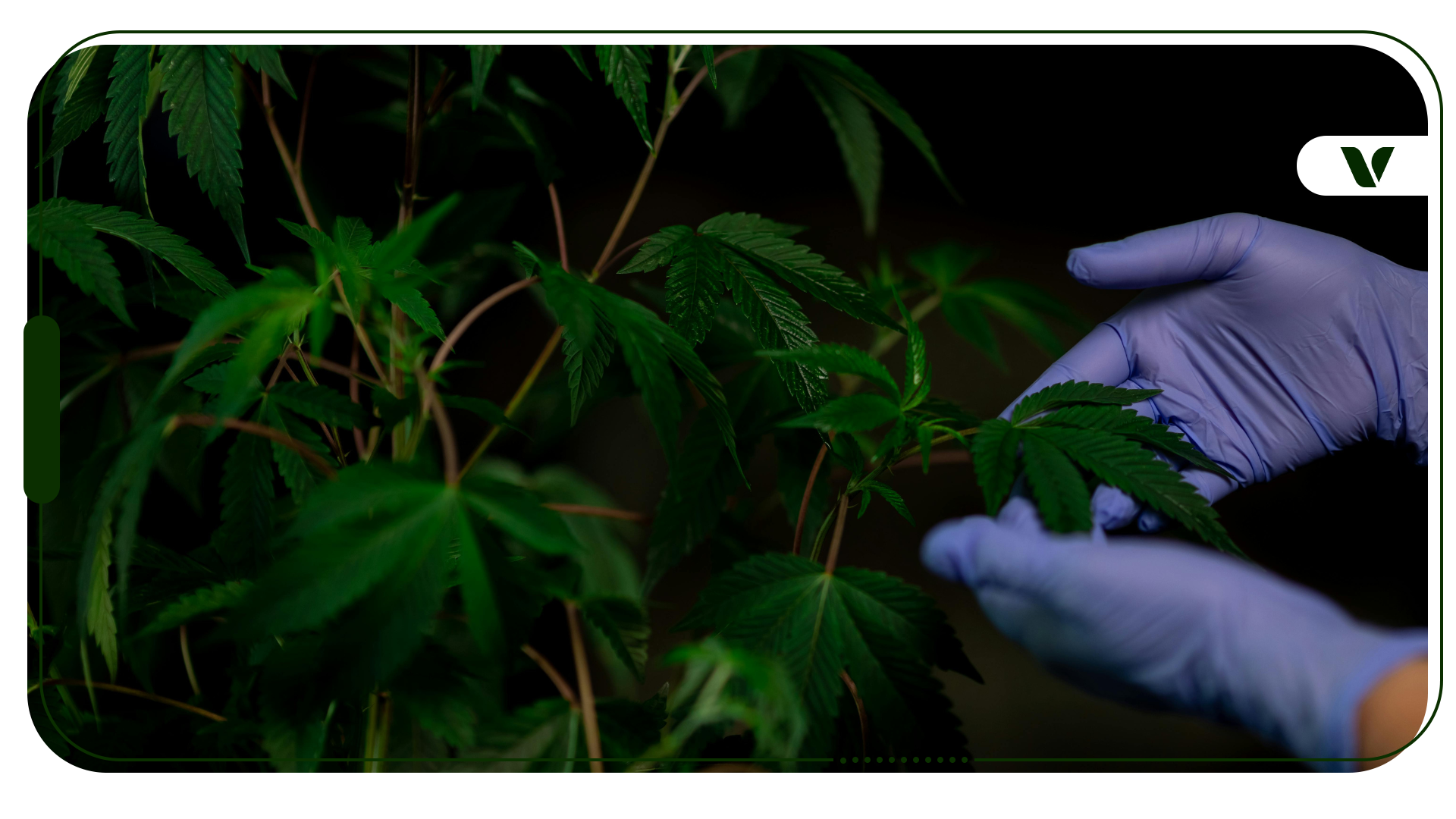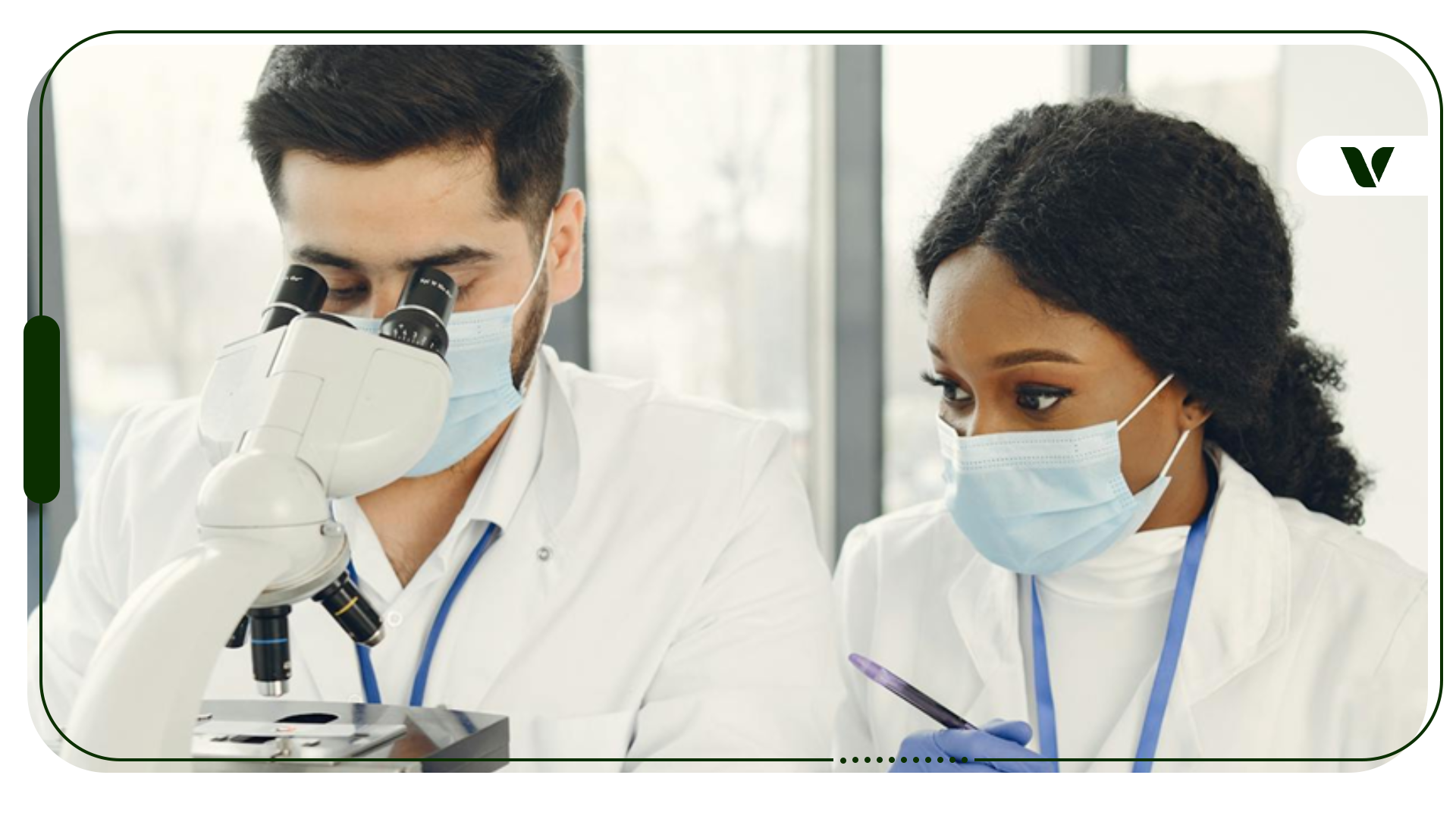Humans were experimenting with cannabis use for medical and recreational purposes before we traveled the Silk Road or even wrote history down (1). Archeologists discovered pounds of dried cannabis in ancient Chinese shaman bags, and cannabis was burned as an incense offering at the Holy of Holies altar in a Judahite shrine in Tel Arad, Israel (2).
Yet it wasn’t until we developed advanced biochemistry techniques that we learned why cannabinoids like delta-9-tetrahydrocannabinol (THC) have potential medical use for our bodies. The discovery of the cannabinoid receptors CB1 and CB2 in 1988 and 1993, respectively, was just the beginning of our understanding of a complex cell-signaling system called the endocannabinoid system (ECS) (3).
The ECS, also known as the endogenous cannabinoid system, is an extensive feedback network present on virtually all other organ systems that serves as the body’s own “master regulator.” This guide will cover the ECS’s parts, the bodily functions it influences, and how it interacts with cannabinoids made by both the body and the cannabis plant.
- What Is the Endocannabinoid System?
- The Difference Between Endocannabinoids and Cannabinoids
- Regulating and Balancing Key Bodily Functions
- How Does the Endocannabinoid System Work?
- Endocannabinoids
- Cannabinoid Receptors
- Enzymes
- What Functions Does the Endocannabinoid System Control?
- What Does THC Do to the Endocannabinoid System?
- What Does CBD Do to the Endocannabinoid System?
- What Is Endocannabinoid Deficiency?
- Final Takeaway
What Is the Endocannabinoid System?
The body uses the endocannabinoid system to naturally regulate itself using self-made cannabinoids called endocannabinoids (4). The ECS is so much more than just the activation of CB1 and CB2 receptors—it’s a way for the body to tell itself that it’s had enough of certain stimuli like pain, brain electrical activity (seizures), pro-inflammatory signals, and more.
In addition to CB1 and CB2 receptors, cannabinoids can activate specialized receptors like transient receptor potential (TRP), peroxisome proliferator-activated receptor (PPAR), and G protein-coupled receptor (GPR), as well as target important ECS enzymes like fatty acid amide hydrolase (FAAH), monoacylglycerol (MAG) and diacylglycerol (DAG) lipases, fatty acid-binding proteins (FABP), and cyclooxygenase (COX2) (5).
Such receptors are the reason why capsaicin reduces pain (TRPV1), glitazone drugs work for diabetes (PPAR), and NSAIDs tone down inflammation in the human body (COX2) (6). These are just a few examples of why the ECS is so medically useful.
The Difference Between Endocannabinoids and Cannabinoids
Endocannabinoids are the body’s self-made cannabinoids that act as agents of internal control by interacting with cannabinoid receptors. Anandamide (AEA) and 2-arachidonoylglycerol (2-AG) are the two best-known endocannabinoids. They are made on-demand from the lipids (fats) in our cells when needed.
Interestingly, the endocannabinoids in our bodies do not structurally resemble the cannabinoids found in cannabis plants. Scientifically, these plant-made cannabinoids are called phytocannabinoids (3). People commonly refer to these plant-based molecules simply as cannabinoids, which can also act on the ECS.
These are cannabinoids like THC, cannabidiol (CBD), cannabigerol (CBG), cannabinol (CBN), cannabidiolic acid (CBDA), tetrahydrocannabinolic acid (THCA), cannabidivarian (CBDV), tetrahydrocannabivarin (THCV), etc. that are in products available for sale in licensed dispensaries.
To date, there are almost 150 known cannabinoids (7). Cannabis plants also contain a multitude of organic compounds like terpenes, which can also influence ECS receptor interactions and cannabis’ effects as well as enhance the potential benefits of cannabinoids through the “entourage effect” (8).
Regulating and Balancing Key Bodily Functions
Since the ECS is present on many cells in nearly every organ system, it is involved in a plethora of bodily functions. It is a way for cells, including neurons, to talk to themselves and each other and then agree to regulate activity. As a result, the ECS can regulate various nervous, cardiovascular, digestive, reproductive, immune, and metabolic functions (9).
The ECS is essential for homeostasis. It influences our sleep, mood, appetite, brain electrical activity, pain perception, nausea and vomiting, fear extinction, memory, motor responses, muscle tone, posture, reproduction, and fertility (10)(11).
How Does the Endocannabinoid System Work?
To make a complete feedback loop, some assembly is required. The basic components of the ECS are:
- Endogenous signaling ligands (self-made endocannabinoids acting as transmitters)
- CB and various other receptors (located on neurons, immune cells, and many others)
- The enzymes that make and break down cannabinoids (FAAH, FABP, MAGL, DAGL, N-acylethanolamine-hydrolyzing acid (NAAA), N-acyl phosphatidylethanolamine phospholipase D (NAPE-PLD), and COX)
Endocannabinoids
Unlike regular neurotransmitters, endocannabinoids are made by special enzymes that trim cell membrane lipids (fats). Endocannabinoids go against the flow of regular signaling (called retrograde transmission). They are all made within the body and are distinct from the cannabinoids found in cannabis plants, though they act on the same receptors.
Through the ECS, cells can both give themselves and other cells feedback about the signals they’re sending. The purpose of endocannabinoids is to keep physiologic functions in homeostasis, thus keeping internal processes stable and the body in balance. The two main endocannabinoids are anandamide and 2-arachidonoylglycerol.
Anandamide is the molecule responsible for the runner’s high and stress-induced pain relief (12). Its levels rise with ovulation, and fluctuations can affect gestational development. Anandamide’s effects on brain reward circuitry are likely implicated in the pleasures of recreational drug consumption and could be a target for treating substance use disorders (13).
Levels of anandamide are altered in conditions like autism spectrum disorder, fibromyalgia, complex regional pain disorders, post-traumatic stress disorder (PTSD), psychosis, and schizophrenia (14)(15). Anandamide is thought to activate TRPV1 receptors, aiding in pain relief and synaptic transmission. Someday, anandamide could be clinically measured to grade the severity of such conditions and patient responses to either conventional or cannabinoid medicine treatment.
The endocannabinoid 2-arachidonoylglycerol, or 2-AG, is made through a similar but distinct pathway from anandamide. Interestingly, its levels appear cyclical and coordinate with the time of day, possibly contributing to sleep/wake cycles and other daily processes. Still, both endocannabinoids are recruited when tissues are injured to suppress pain and inflammatory signals (16).
2-AG is about 170 times more prevalent in the brain than anandamide (17). The brain heavily recruits 2-AG in response to stroke and closed-head injuries to promote neuronal healing, reduce infarct size, and reduce cell death in the hippocampus (memory center) (18). It also plays key roles in psychological health and relieving stress-induced pain, like anandamide does (19).
Similar molecules, like palmitoylethanolamide (PEA), are lipids like endocannabinoids but don’t directly activate CB1 or CB2 receptors (20). Instead, they activate PPAR to reduce inflammation and tone down the ECS enzymes that break down cannabinoids, which indirectly increases the main endocannabinoids. Though preliminary, PEA is also thought to be potentially useful in managing chronic pain.
Cannabinoid Receptors
In the brain, the ECS acts as the “master synaptic regulator” where CB1 is the most abundant G protein-coupled receptor (GPCR) (6)(3). Each neuron has hundreds of thousands of synaptic connections that are all actively regulated and self-regulated by the CB1 receptors. This means neurons can give themselves and other neurons feedback by using CB1 receptors to turn down neurotransmitter release and electrical excitability, giving the ECS neuroprotective properties.
CB1 plays key roles in regulating neural plasticity, electrical activity, coordination, proprioception, and cognitive function. It is also the receptor responsible for the psychoactive “high” of cannabis consumption. The highest density of CB1 receptors is in the central nervous system (CNS), but they are also found in GI tract nerves, autonomic nerves, cardiovascular system, endocrine and adipose tissues, and the skin (6).
CB2 receptors are also present in the brain but to a lesser extent because they exclusively reside in immune cells found in the brain and the rest of the body. In addition to brain immune cells (called microglia), CB2 receptors are also found on various immune cells in the spleen, T cells, macrophages, APCs, and synovial fibroblast cells (6).
CB2 is a major regulator and modulator of inflammation and immune cells; these receptors can tone down pro-inflammatory markers like cytokines and interleukins. Interestingly, CB2 receptors are also expressed on transformed tumor cells, which could make them a target for future cancer treatment. Both endocannabinoids and cannabinoids can partially trigger CB1 and CB2 receptors.
Enzymes
The third and often overlooked component of the ECS is the enzymes involved in making and breaking down endocannabinoids. There are many enzymes involved in ECS processes, including NAPE-PLD, FAAH, FABP, monoacylglycerol lipase (MAGL), DAGL, NAAA, and COX2. However, the main ones of therapeutic interest are FAAH and MAGL.
FAAH naturally degrades anandamide, while MAGL primarily degrades 2-AG and can also degrade anandamide but more slowly (3). By targeting these breakdown enzymes, levels of endocannabinoids will increase and thus improve endocannabinoid tone. We know that plant-based cannabinoids and their acidic forms can also influence the function of these enzymes. For instance, CBD can inhibit FAAH and bind to FABP, thus increasing endocannabinoids.
Cannabinoid precursors like CBG, CBGA, CBDA, and THCA can inhibit MAGL and COX-2. COX-2 is the target of NSAIDS and is another enzyme that may be targeted to reduce inflammation. These natural enzyme inhibitors work to increase endocannabinoid tone, and artificial enzyme inhibitors could be developed as non-psychoactive treatments.
People can naturally have mutations in ECS enzymes that make them work too fast or too slowly, resulting in different health outcomes and responses to treatments. DAGL creates 2-AG and could theoretically be induced to improve levels of 2-AG. CBDV, CBDVA, and THCVA may weakly inhibit the formation of 2-AG, indirectly antagonizing CB receptor activity (15).
Thus, ECS enzymes are clinically relevant and call for further study to create new cannabis-based treatments without psychoactive effects. Non-psychoactive treatments like ECS enzyme inducers and inhibitors would be far more tolerable to a wider audience of patients.
What Functions Does the Endocannabinoid System Control?
To review, the role of the endocannabinoid system is to act as a master auto-regulator found on virtually every organ system and thus has widespread reach and influence. It allows cells to talk to themselves and give feedback to other cells about the signals being sent to tone them down, supporting homeostasis in the body.
Because of the ECS’s prevalence and diversity, it governs all kinds of functions, including the following (21)(22)(4):
- immune responses
- appetite and digestion
- metabolism
- chronic pain
- inflammation and other immune system responses
- mood
- learning and memory
- motor control
- sleep
- cardiovascular system function
- muscle formation
- bone remodeling and growth
- liver function
- reproductive system function
- stress
- skin and nerve function
- energy control
- communication within and between cells
This makes the ECS a very helpful and useful system to understand and employ.
What Does THC Do to the Endocannabinoid System?
THC is a plant-derived cannabinoid that can act on our body’s endocannabinoid system and cause a “high.” The discovery of THC in 1964 was born of scientific curiosity about what exactly makes cannabis tick (23). Yet it predates the discovery of the endocannabinoid system—when we learned that THC interacts with CB1 and CB2 receptors—by almost 30 years (15).
Just like the body’s natural endocannabinoids, THC is a lipid transmitter that acts on both CB receptors. Thus, THC acts similarly to endocannabinoids, causing euphoria and pain relief, inducing appetite, and reducing nausea and inflammation. THC is distinct from synthetic cannabinoids (e.g., spice), which are full agonists that behave very differently and cause separate, intense negative effects. For this reason, full agonists are never recommended.
However, THC still has potential negative effects, like anxiety, panic, sedation, fast heart rate, dry mouth and eyes, decreased fertility, and gestational effects like low birth weight. Minors and older populations should exercise caution due to the impairing effects of THC and potential drug interactions from medications. However, the lack of CB receptors in our breathing centers likely explains the nonexistence of cannabis overdose deaths (11).
What Does CBD Do to the Endocannabinoid System?
CBD is a widely recognized star of medical research for its broad range of potential medical applications. In cannabis plants, CBD and THC are usually formed in opposite ratios (high THC/low CBD or vice-versa). Contrary to popular belief, CBD only weakly binds to both CB receptors and antagonizes them (4).
It also behaves as a modifier of CB receptors and changes the way other cannabinoids like THC bind to them. In this way, CBD can counteract some of the psychotropic effects of THC like anxiety and the “high.” Additionally, CBD can inhibit enzymes like FAAH and FABP that break down endocannabinoids, thereby indirectly boosting endocannabinoid tone.
By itself, CBD is known to reduce anxiety and serve as an antioxidant, neuroprotective, anti-inflammatory agent (24). CBD is a part of approved treatments for chronic pain and spasticity in other countries (nabiximols aka “Sativex,” 1:1 CBD:THC) and for epilepsy and seizure conditions like Lennox-Gastaut syndrome, Dravet syndrome, and tuberous sclerosis-related seizures in the U.S. (“Epidiolex,” FDA-approved pharmaceutical CBD).
Other potential medical applications like anxiety, PTSD, depression, autism spectrum disorder, Alzheimer’s, Parkinson’s, Huntington’s disease, and schizophrenia are still underway but are yielding many promising preclinical results (15). CBD is generally safe and well-tolerated even at chronic daily doses of 1500 milligrams (24). The side effects of CBD are milder than those of THC, but excessive doses most commonly cause tiredness, diarrhea, and changes in appetite/weight.
Notably, when CBD is combined with antiseizure drugs, it can cause an increase in liver enzymes that is reversible. CBD is degraded by CYP3A4 enzymes, which also degrade about 60% of clinically prescribed drugs. Therefore, some medications can increase the levels of CBD in your system, but no serious adverse events or deaths have been reported. CBD is not intoxicating like THC but can still subtly influence mood.
What Is Endocannabinoid Deficiency?
Clinical endocannabinoid deficiency (CED) was first proposed in 2001 by Dr. EB Russo and has been explored and revisited since then. The idea is that since we all have an endocannabinoid system with a routine tone, significant alterations or deficits in the ECS can lead to syndromes with overlapping symptoms like severe pain, sleep and mood disturbances, digestion issues, and more. Genetic differences in CB receptors and ECS enzymes and environmental triggers likely underlie this set of disorders.
Currently, the strongest backing of CED is found in patients with migraines, fibromyalgia, or irritable bowel syndrome (25). Other conditions that may be relevant to CED include PTSD, neonatal failure to thrive, cystic fibrosis, causalgia, brachial plexopathy, phantom limb pain, infantile colic, glaucoma, dysmenorrhea, hyperemesis gravidarum, unexplained fetal wastage (repetitive miscarriages), bipolar disease, and possibly many others.
These conditions may often co-occur, and there is a commonality in unexplained tissue pathology and testing. Newer imaging studies and findings of low endocannabinoid levels have supplied objective backing to CED. CED will need to be further explored to understand how it could be treated with cannabinoid-based medicine.
Final Takeaway
The endocannabinoid system is a recent discovery not regularly taught in medical school. We are only beginning to unlock its untapped potential and our understanding of it as the body’s own self-made master regulator. Plant-made cannabinoids like THC and CBD can use this same system to exert health benefits and are shown to have some therapeutic potential.
Although the ECS is relatively new to us, the existing evidence of its functions and potential makes it impossible to ignore any longer. Because of its vast dispersion and influence in our bodies, the ECS is a prime target for advancing modern medicine. The more we learn about this intricate system, the better we will understand the role cannabinoids and endocannabinoids play in our health and wellness.
Note: The content on this page is for informational purposes only and is not intended to be professional medical advice. Do not attempt to self-diagnose or prescribe treatment based on the information provided. Always consult a physician before making any decision on the treatment of a medical condition.
This blog post was originally written by Bethan Rose and published on 7/17/19. Updated 1/24/22.
1. Russo, E. B., Jiang, H. E., Li, X., Sutton, A., Carboni, A., del Bianco, F., Mandolino, G., Potter, D. J., Zhao, Y. X., Bera, S., Zhang, Y. B., Lü, E. G., Ferguson, D. K., Hueber, F., Zhao, L. C., Liu, C. J., Wang, Y. F., & Li, C. S. (2008). Phytochemical and genetic analyses of ancient cannabis from Central Asia. Journal of experimental botany, 59(15), 4171–4182. https://doi.org/10.1093/jxb/ern260
2. Arie E, Rosen B, Namdar D. (2020). Cannabis and Frankincense at the Judahite Shrine of Arad. Tel Aviv. 2020 Jan 2;47(1):5-28. https://www.tandfonline.com/doi/full/10.1080/03344355.2020.1732046?scroll=top&needAccess=true
3. Lee M. Endocannabinoid Discovery Timeline (Project CBD). (2020). Accessed 20 January 2021: https://www.projectcbd.org/science/endocannabinoid-discovery-timeline.
4. Alger B. E. (2013). Getting high on the endocannabinoid system. Cerebrum : the Dana forum on brain science, 2013, 14. https://www.ncbi.nlm.nih.gov/pmc/articles/PMC3997295/
5. O’Sullivan S. E. (2016). An update on PPAR activation by cannabinoids. British journal of pharmacology, 173(12), 1899–1910. https://doi.org/10.1111/bph.13497
6. Gerdman, G. (2021). (Speaker). Overview of the Endocannabinoid System. [Video/Lecture]. Society of Cannabis Clinicians.
7. Citti, C., Linciano, P., Russo, F., Luongo, L., Iannotta, M., Maione, S., Laganà, A., Capriotti, A. L., Forni, F., Vandelli, M. A., Gigli, G., & Cannazza, G. (2019, December 30). A novel phytocannabinoid isolated from Cannabis Sativa L. with an in vivo cannabimimetic activity higher than Δ9-tetrahydrocannabinol: Δ9-tetrahydrocannabiphorol. Nature News. Retrieved December 10, 2021, from https://www.nature.com/articles/s41598-019-56785-1.
8. Russo E. B. (2019). The Case for the Entourage Effect and Conventional Breeding of Clinical Cannabis: No “Strain,” No Gain. Frontiers in plant science, 9, 1969. https://doi.org/10.3389/fpls.2018.01969
9. Khan, M. I., Sobocińska, A. A., Czarnecka, A. M., Król, M., Botta, B., & Szczylik, C. (2016). The Therapeutic Aspects of the Endocannabinoid System (ECS) for Cancer and their Development: From Nature to Laboratory. Current pharmaceutical design, 22(12), 1756–1766. https://doi.org/10.2174/1381612822666151211094901
10. National Academies of Sciences, Engineering, and Medicine, Health and Medicine Division, Board on Population Health and Public Health Practice, & Committee on the Health Effects of Marijuana: An Evidence Review and Research Agenda. (2017). The Health Effects of Cannabis and Cannabinoids: The Current State of Evidence and Recommendations for Research. National Academies Press (US).
11. Ebbert, J. O., Scharf, E. L., & Hurt, R. T. (2018, December 1). Medical Cannabis – Concise Review for Clinicians. Medical Cannabis. Retrieved December 10, 2021, from https://www.mayoclinicproceedings.org/article/S0025-6196(18)30709-2/fulltext
12. Fuss, J., Steinle, J., Bindila, L., Auer, M. K., Kirchherr, H., Lutz, B., &; Gass, P. (2015, October 20). A runner’s high depends on cannabinoid receptors in mice. PNAS. Retrieved September 10, 2021, from https://www.pnas.org/content/112/42/13105.abstract
13. Scherma, M., Masia, P., Satta, V., Fratta, W., Fadda, P., & Tanda, G. (2019). Brain activity of anandamide: a rewarding bliss?. Acta pharmacologica Sinica, 40(3), 309–323. https://www.nature.com/articles/s41401-018-0075-x
14. Hillard C. J. (2018). Circulating Endocannabinoids: From Whence Do They Come and Where are They Going? Neuropsychopharmacology : official publication of the American College of Neuropsychopharmacology, 43(1), 155–172. https://doi.org/10.1038/npp.2017.130
15. Di Marzo V. (2020). The endocannabinoidome as a substrate for noneuphoric phytocannabinoid action and gut microbiome dysfunction in neuropsychiatric disorders. Dialogues in clinical neuroscience, 22(3), 259–269. https://pubmed.ncbi.nlm.nih.gov/33162769/
16. Silver RJ. The Endocannabinoid System of Animals. Animals. 2019; 9(9):686. https://doi.org/10.3390/ani9090686
17. Stella, N., Schweitzer, P., & Piomelli, D. (1997). A second endogenous cannabinoid that modulates long-term potentiation. Nature, 388(6644), 773–778. https://doi.org/10.1038/42015
18. Panikashvili, D., Simeonidou, C., Ben-Shabat, S., Hanus, L., Breuer, A., Mechoulam, R., & Shohami, E. (2001). An endogenous cannabinoid (2-AG) is neuroprotective after brain injury. Nature, 413(6855), 527–531. https://doi.org/10.1038/35097089
19. Hohmann AG, Suplita RL, Bolton NM, Neely MH, Fegley D, Mangieri R, Krey JF, Walker JM, Holmes PV, Crystal JD, Duranti A. An endocannabinoid mechanism for stress-induced analgesia. Nature. 2005 Jun;435(7045):1108-12.
20. Passavanti, M.B., Alfieri, A., Pace, M.C. et al. Clinical applications of palmitoylethanolamide in pain management: protocol for a scoping review. Syst Rev 8, 9 (2019). https://doi.org/10.1186/s13643-018-0934-z
21. Zou, S., & Kumar, U. (2018). Cannabinoid Receptors and the Endocannabinoid System: Signaling and Function in the Central Nervous System. International journal of molecular sciences, 19(3), 833. https://doi.org/10.3390/ijms19030833
22. Maccarrone, M., Bab, I., Bíró, T., Cabral, G. A., Dey, S. K., Di Marzo, V., Konje, J. C., Kunos, G., Mechoulam, R., Pacher, P., Sharkey, K. A., & Zimmer, A. (2015). Endocannabinoid signaling at the periphery: 50 years after THC. Trends in pharmacological sciences, 36(5), 277–296. https://doi.org/10.1016/j.tips.2015.02.008
23. Gaoni Y, Mechoulam R. Isolation, structure and partial synthesis of an active constituent of Hashish. Journal of the American Chemical Society. 1964;86:1646–1647. DOI: 10.1021/ja01062a046
24. Ifflant, K., & Grottenheim, F. (2017). An update on safety and side effects of Cannabidiol: A Review of Clinical Data and Relevant Animal Studies. Cannabis and Cannabinoid Research. Retrieved December 16, 2021, from https://www.liebertpub.com/doi/10.1089/can.2016.0034
25. Russo E. B. (2016). Clinical Endocannabinoid Deficiency Reconsidered: Current Research Supports the Theory in Migraine, Fibromyalgia, Irritable Bowel, and Other Treatment-Resistant Syndromes. Cannabis and cannabinoid research, 1(1), 154–165. https://doi.org/10.1089/can.2016.0009
Author, Share & Comments









